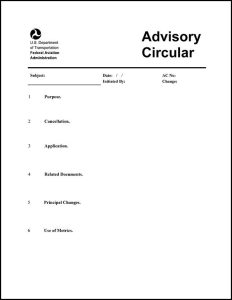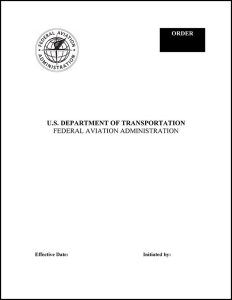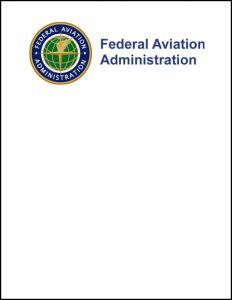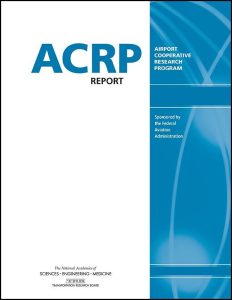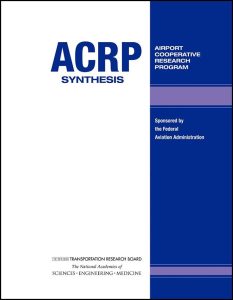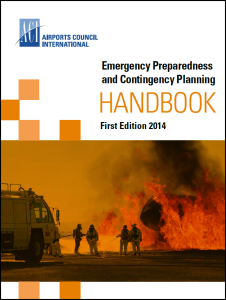To narrow the library of airside resources, use the filter boxes or airport map below or search box above.
Click an item below to expand.
Resources Matching Your Search
2009
This advisory circular (AC) provides guidance to the airport operator in the development and implementation of an airport emergency plan (AEP). The AEP addresses essential emergency-related and deliberate actions planned to ensure the safety of and emergency services for the airport populace and the community in which the airport is located.
2013
This advisory circular (AC) explains the importance of reporting collisions between aircraft and wildlife, more commonly referred to as wildlife strikes. It also explains recent improvements in the Federal Aviation Administration's (FAA's) Bird/Other Wildlife Strike Reporting system, how to report a wildlife strike, what happens to the wildlife strike report data, how to access the FAA National Wildlife Strike Database (NWSD), and the FAA's Feather Identification program.
2004
This advisory circular (AC) provides methods acceptable to the administrator for showing compliance with the Airport Certification Manual requirements in Title 14, Code of Federal Regulations (CFR) Part 139, Certification of Airports.
2016
This order provides FAA personnel with the policies, standards, and procedures for conducting the Airport Certification Program. This order helps ensure standardization and uniformity in the application of the program and in enforcing Title 14 Code of Federal Regulations (CFR), Part 139, Certification of Airports (Part 139). Chapters include administration; certification process; airport certification manual; inspection process; compliance and enforcement policy; accident investigation responsibilities and procedures; inspector training, qualifications and credentials; petitions for exemptions; participation in safety-related activities; program evaluations, staff visits and staff regional liaisons; and reports, correspondence and records.
2008
This advisory circular (AC) provides guidance for planning and implementing the airport aircraft rescue and firefighting (ARFF) communications systems. The prompt and efficient response of a modern ARFF service depends on the reliability of its communications and alarm systems. The material contained in this AC applies to the operation of civil airports where aeronautical activity is conducted. Certificated airport operators may use these recommendations and guidelines to satisfy some of the requirements of 14 Code of Federal Regulations (CFR), Part 139, Certification of Airports.
2020
A hot spot is defined as a location on an airport movement area with a history of potential risk of collision or runway incursion and where heightened attention by pilots and drivers is necessary. By identifying hot spots, it is easier for users of an airport to plan the safest possible path of movement in and around that airport. Planning is a crucial safety activity for airport users—both pilots and air traffic controllers alike. By making sure that aircraft surface movements are planned and properly coordinated with air traffic control, pilots add another layer of safety to their flight preparations. Proper planning helps avoid confusion by eliminating last-minute questions and building familiarity with known problem areas.
2018
This document was developed for individuals, teams, or task forces responsible for establishing and maintaining a security management system (SeMS) at airports. It helps individuals understand SeMS, informs them of the benefits of SeMS, and helps them determine whether an airport is ready to establish an SeMS. It also provides guidance on establishing an SeMS, the governance required to establish and maintain the SeMS, and undertaking the quality assurance of the SeMS.
2015
ACRP Report 145 introduces and guides the application of a risk-based approach to wildlife hazard management (WHM) programs and outlines additional steps for integrating such programs into an airport's safety management system (SMS). This report also provides a customizable tool, the Wildlife Hazard Management Risk Assessment Tool (WHaMRAT), which is available as a CD-ROM. The tool includes a summary of existing database wildlife hazard descriptions; numerical values for hazard severity and likelihood by species, derived from the FAA Wildlife Strike Database; and an electronic or manual risk analysis template, which includes the incorporation of variables on or off the airport.
2008
ACRP Synthesis 12 examines factors affecting safe winter operations and the prevention of runway incursions by airport snow removal equipment operators.
2011
ACRP Synthesis 29 addresses the current state of ground-handling practices, focusing on safety measures and training. Issues addressed in the report include ramp safety operations, staff roles and responsibilities, safety training, audit and inspection programs, safety violation programs, and collaborative safety initiatives, such as foreign object debris programs.
2014
This handbook brings together best practices, knowledge, and experience from airports around the world. The handbook helps airport operators develop and implement a robust airport emergency plan, including the restoration of operations after an emergency. It also deals with business continuity planning. The handbook covers the roles and responsibilities of airport operators, as well as the coordination of emergency response plans with other organizations interfacing with the airport during an emergency. This resource is available from the ACI store for $125 for members and $1,000 for non-members.
2009
This advisory circular (AC) furnishes general guidance for airport employees, airport management, and other personnel responsible for aircraft rescue and firefighting (ARFF) operations at the scene of an aircraft accident on the proper preservation of evidence. It explains the need for the preservation of evidence and details operational actions that may be permitted, if performed in the interest of preserving life.
2015
The FAA recommends the guidelines and standards in this advisory circular (AC) for aircraft rescue and firefighting training programs. In general, the use of this AC is not mandatory. However, for airports certificated under Title 14 Code of Federal Regulations, Part 139 (14 CFR part 139), this AC is required.
2010
This advisory circular (AC) provides FAA standards and recommendations for the training of airport firefighting and rescue personnel in the proper operation and tactical use of aircraft rescue and firefighting (ARFF) vehicles and ARFF vehicles equipped with high reach extendable turrets (HRETs).
2004
This advisory circular (AC) provides guidance on aircraft fire extinguishing agents and provides an acceptable methodology for complying with Title 14, Code of Federal Regulations, Part 139, Certification of Airports.
2012
This advisory circular (AC) contains standards for the planning, design, installation, and maintenance of engineered materials arresting systems (EMAS) in runway safety areas (RSA). Recognizing the difficulties associated with achieving a standard safety area at all airports, the FAA undertook research programs on the use of various materials for aircraft arresting systems. These research programs, as well as evaluation of actual aircraft overruns into an EMAS, have demonstrated its effectiveness in arresting aircraft overruns.
2014
ACRP Report 103 provides suggestions for the integration of the National Incident Management System (NIMS) into airport response plans for incidents, accidents, and events. The guidebook discusses common NIMS and incident command terminology, outlines recommended incident command structures for various situations relative to their complexity, and includes sample plans from airports and training outlines.
2019
ACRP Report 16, second edition, is designed to help airport practitioners, owners, operators, managers, and policymakers of small airports, who may have varying degrees of experience and backgrounds, to fulfill their responsibilities in such areas as financial management, oversight of contracts and leases, safety and security, noise impacts, community relations, compliance with federal and state obligations, facility maintenance, and capital improvements. The first edition has been edited and reformatted for currency, relevance, and usability and updated with additional information and new subject areas (e.g., unmanned aircraft systems, geographic information systems, digital notices to airmen, social media, and federal and state obligations). Also, hyperlinks to many of the documents and resources mentioned in this report, such as ACRP publications, industry sources, and sample checklists, have been collected into ACRP WebResource 6: Resources for Managing Small Airports.
2012
ACRP Synthesis 38 includes suggested procedures to help airports expedite the recovery of disabled aircraft that are designed to avoid injury to personnel, damage to airport equipment, and secondary damage to the aircraft.
2014
ACRP Synthesis 58 describes safety reporting methods and systems for airports certificated under Title 14 Code of Federal Regulations Part 139 by assessing current practices, processes, and systems used to collect and analyze safety data and information.
